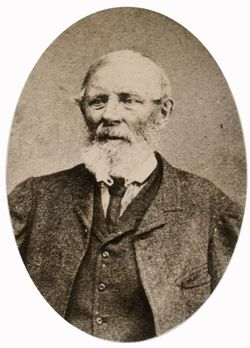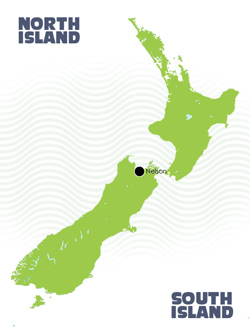The novel starts in Raben Steinfeld, Mecklenbourg, Germany, in 1937.
When we first meet Cat, she lives in a brothel in Piraki Bay, New Zealand. Peraki is a bay on the south side of Banks Peninsula, New Zealand. It is the site of the first permanent European settlement in Canterbury. George Hempelman, a Prussian whaler, established a whaling station in the bay in 1835, and from 1837 lived there permanently.
George Hempelman is a whaler, and his wife helped Cat. Prussian born George Hempelman, master of the brig Bee, established a permanent whaling station at Peraki Bay in 1837. This was the first permanently inhabited European settlement in Canterbury.
Cat liked to bring rata flowers for Mrs Hempelman, and the woman called them fire blossoms.
Te Rauparaha is the chieftain in the Maori tribe where Cat stays for several years. Te Rauparaha (c. 1760s – 27 November 1849) was a Māori warlord. One of the most powerful military leaders of the Musket Wars, Te Rauparaha fought a war of conquest that greatly expanded Ngāti Toa southwards, receiving the epithet "the Napoleon of the South". He remains one of the most prominent and celebrated New Zealand historical figures.
The German settlers emigrate to New Zealand as part of a programme of the New Zealand Company. The New Zealand Company, chartered in the United Kingdom, was a company that existed in the first half of the 19th century on a business model that was focused on the systematic colonisation of New Zealand.
The German settlers emigrate to New Zealand as part of a programme of the New Zealand Company. The New Zealand Company, chartered in the United Kingdom, was a company that existed in the first half of the 19th century on a business model that was focused on the systematic colonisation of New Zealand.
The man that organises the settlers and persuades them to go to New Zealand is John Nicholas Beit. He was an entrepreneur who, in the early 1840s, promoted, organised, and led (together with his large family) a group of German emigrants to settle in Nelson, New Zealand. The project was a failure, and relations between Beit and the emigrants he led were acrimonious. Beit left Auckland for Sydney in 1849 and resided in Australia for some years before returning to England, although some of his children remained in the antipodes.
The ship stopped in Salvador de Bahia, Brazil, before continuing the voyage towards New Zealand.
Then they arrive in Nelson. Nelson is a city and unitary authority on the eastern shores of Tasman Bay at the top of the South Island of New Zealand. It is the oldest city in the South Island and the second-oldest settled city in the country; it was established in 1841 and became a city by British royal charter in 1858.The founder of Nelson was Arthur Wakefield. Captain Arthur Wakefield (19 November 1799 – 17 June 1843) served with the Royal Navy before joining his brother, Edward Gibbon Wakefield, in founding the New Zealand Company settlement of Nelson in New Zealand.
Wakefield was executed when he and Thompson, a magistrate, led some settlers to talk to the Maori because they refused to sell their land because they thought they had been cheated. A shot killed Te Roa, Te Rauparaha's daughter. Wakefield and Thomson were executed. The Wairau Affray of 17 June 1843,[1] also called the Wairau Massacre and the Wairau Incident, was the first serious clash of arms between British settlers and Māori in New Zealand after the signing of the Treaty of Waitangi and the only one to take place in the South Island. The incident was sparked when a magistrate and a representative of the New Zealand Company, who held a duplicitous deed to land in the Wairau Valley in Marlborough in the north of the South Island, led a group of European settlers to attempt to arrest Ngāti Toa chiefs Te Rauparaha and Te Rangihaeata. Fighting broke out and 22 British settlers were killed, nine after their surrender. Four Māori were killed, including Te Rongo, who was Te Rangihaeata's wife.
St Pauli Village is where the Germans settled but the land was often flooded and they had to leave after some months. The first group of Germans arrived on the St Pauli in 1843, and founded the village of St Paulidorf in the Moutere valley, near Nelson. Bad flooding forced the abandonment of the village scarcely a year after it began, and now nothing remains but farmland.
Ngtai Tahu is the aori tribe who are Chris's neighbours. Ngāi Tahu is the principal Māori tribe of the South Island. Its tribal area is the largest in New Zealand.
Hongi is the usual Maori greeting. The hongi is a traditional Māori greeting performed by two people pressing their noses together, often including the touching of the foreheads. The greeting is used at traditional meetings among Māori people,
New German settlers come to New Zealand led by Count Rantzau. The "count Rantzau settlers" refer to German immigrants who arrived in Nelson, New Zealand, in the 1840s, sponsored by Count Kuno zu Rantzau-Breitenburg. This group settled in Ranzau, later renamed Hope, and established a German community known for winemaking, orchards, and horticulture.
After Nelson, Cat, Ida and Ottfriend move to Purau. Purau is a small town in Canterbury.
On their way there Cat tells some Maori stories at night. One is about Kupe who stole Kuramarotini. Kupe was a legendary Polynesian explorer who, according to Māori oral history, was the first person to discover New Zealand. In Māori mythology, Kuramārōtini was the daughter of a chief of Hawaiki. Toto made a gift to her of the canoe Matahourua, in which she went out fishing with her husband Hoturapa and their friend Kupe. Kupe tricked Hoturapa to dive into the water to free one of the lines. Once Hoturapa was overboard, Kupe set sail for New Zealand with Kuramārōtini




















No comments:
Post a Comment